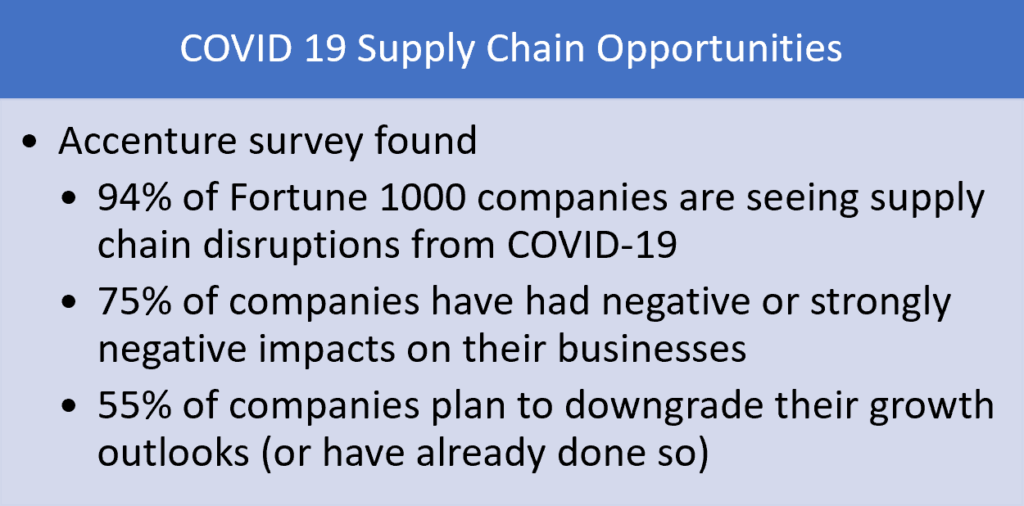COVID 19 has illustrated the challenges created by a global supply chain for thousands of American companies. A supply chain is a network between a company and its suppliers to produce and distribute a specific product to the final buyer. This network includes different activities, people, entities, information, and resources. The supply chain also represents the steps it takes to get the product or service from its original state to the customer. Companies develop supply chains so they can reduce their costs and remain competitive in the business landscape.
Supply chain management is the key to many companies’ economic success. As noted by the graphic below, an Accenture survey of companies found major disruption of the supply chain created by COVID 19 that is generating negative economic results from companies that in many cases were not forced to close due to government regulation.

Another survey by Thomas of over 1000 North American manufacturers found that 64% of manufacturers report they are likely to bring manufacturing production and sourcing back to North America — a 10% increase from the same sentiment reported in the March 2020 survey.
Companies with a supply chain impacted by COVID 19 should focus on contracting their supply chain closer to U.S. domestic facilities to address these short term and long-term economic challenges. Companies considering a supply chain location contraction near domestic U.S. sites need to educate their supply chain on the regional site development process and opportunity for economic development incentives as many of these facilities will be new investments. The decision to move the supply chain closer to domestic production facilities needs to make financial sense and utilizing an effective site development process can make that happen. The site development process for a company’s supply chain partner involves measuring the region’s potential for economic growth, availability of skilled workers and cost of doing business, negotiating the land purchase/lease process, developing a project pro-forma, negotiating the land use land use entitlements such as zoning, and negotiations of tax incentives.